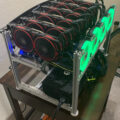average investment > The Crucial Role of Precious Metals in Shaping the Fourth Industrial Revolution
The Crucial Role of Precious Metals in Shaping the Fourth Industrial Revolution
Introduction: For centuries, precious metals like gold and silver have served as currencies. However, in recent times, they have found a new purpose – playing a vital role in what many refer to as the Fourth Industrial Revolution. This article delves into the significant ways in which precious metals contribute to cutting-edge technologies, driving innovation in various industries. Additionally, it explores the potential for savvy investments in these metals for retirement planning.
The Special Properties of Precious Metals:
Gold:
- Exceptional conductivity: Vital for electronic applications.
- Corrosion resistance: Enables use in diverse industries.
- Non-toxic nature: Suitable for medical devices without harming patients.
Silver:
- Best electrical conductor: Essential for efficient electrical components.
- High reflectivity: Ideal for solar panels and renewable energy technologies.
- Antimicrobial properties: Applicable in medical applications and water purification.
Palladium:
- Catalyst for converting carbon dioxide into fuel: Supports sustainable energy.
- Water purification: Removes impurities for clean and safe water.
- Versatile electronic applications: Used in cell phones and computers.
Modern Uses of Precious Metals:
Gold:
- Nanotechnology: Utilized for creating small devices with various applications.
- Quantum computing: Key player in this high-speed computing realm.
- Renewable energy technologies: Facilitates efficient electricity conduction in solar panels.
- Space travel: Enhances fuel cell efficiency for practical space exploration.
Silver:
- Flexible electronics: Contributes to wearable and embedded electronic devices.
- Flexible battery development: A potential game-changer for wearable tech with longer-lasting power.
Palladium:
- Fuel cell development: Powers vehicles more efficiently with zero emissions.
- Hydrogen-powered vehicles: Potential for even greater efficiency compared to fuel cells.
Should You Buy Precious Metals as an Investment?
Considerations:
- Price volatility: Precious metal prices can fluctuate rapidly.
- No guaranteed return: Investments may not yield profits, and losses are possible.
- Long-term commitment: Precious metals are not for quick returns; holding for 5-10 years may be necessary.
- Artificial scarcity: Speculation may artificially inflate prices, risking future crashes.
- Asteroid mining: Potential future mining could increase supply and lower prices.
Conclusion: While precious metals play a crucial role in the Fourth Industrial Revolution, investing in them requires careful consideration of risks and a commitment to a long-term strategy. Investors should be prepared for price volatility and potential external factors influencing the market.
The Future of Precious Metals:
Predictions for the Next 100 Years:
- Gold’s continued popularity: Expected to remain a safe investment.
- Silver surpassing gold: Increasing popularity due to industrial applications.
- Platinum as the new gold: Rising prominence in industrial uses.
- Palladium’s industrial dominance: Overtaking platinum for various applications.
- Continued safe haven status: Precious metals remain stable and valuable.
- Increased accessibility: More platforms for buying and selling precious metals.
- Rising prices: Growing demand contributing to price increases.
- Expanded applications: Precious metals used in innovative new technologies.
- Growing scarcity: Depleting deposits leading to increased rarity.
Conclusion: The future of precious metals appears promising, with continued value and potential for growth. As the world enters the Fourth Industrial Revolution, these metals are poised to remain a secure and enduring investment. Investors seeking stability and long-term growth may find precious metals an attractive option.




